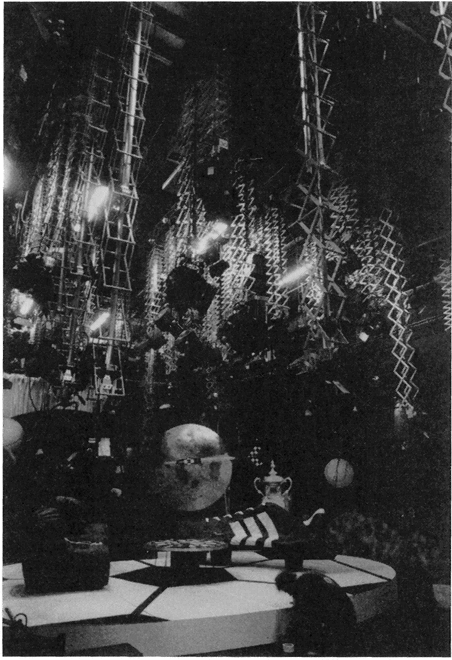Studio lighting
Rigging and lighting a set is a time-consuming affair, so it is vital the lighting director gets a clear brief before he begins his work.
Rigging
The time it takes to rig lights will depend on the size and complexity of the set, and the equipment the lighting director is working with. Ideally the lighting rig should have great height, be fully motorised (so that each light can be brought down separately) and be a saturation rig (so that lights can be placed anywhere).
This isn’t necessary for all programmes. If you are using a permanent set you don’t need the flexibility to remove all your lights quickly, so motorising the rig may be unnecessary. Many news and current affairs programmes use relatively low ceilings with fixed lights. These reduced studio heights can substantially reduce building rental costs.
Lighting during rehearsals
In the ideal world the lighting department is given enough time to rig and set lights so that when you are rehearsing your programme there is little interference. Tighter budgets make it impractical to take a studio out of service for a full day to set lights for anything but the largest productions. Lighting directors now work around performers during rehearsals.
While this may be an inconvenience there is precious little you can do about it. Most lighting crews have their own radio talkback circuit, to communicate with the lighting and vision control room without going across production talkback.
Fluorescent lighting
There are a few reasons why some studios choose to use fluorescent lighting over normal (tungsten) lights. In some buildings air-conditioning is inadequate for the heat of conventional lights. Fluorescent lights burn cold, so air-conditioning requirements are greatly reduced.
Electricity supplies are unreliable in some cities, and the lower power consumption of fluorescent lights means they can be run off generators and batteries more easily.
Where lights hang sufficiently low that people can touch them, tungsten fights, which get dangerously hot, can cause severe burns. Fluorescent lights are cold to the touch.
The soft lights are fine, but it is difficult as yet to get any serious modelling out of the harder fluorescent lights. Some people successfully mix the two forms of lights – fluorescents for the softs with a few tungstens for key lights.
Courtesy TWI/124 Facilities
Comprehensive lighting rigs give studios the ability to change quickly between different sets. The height also allows lights not being used to be kept clear.

